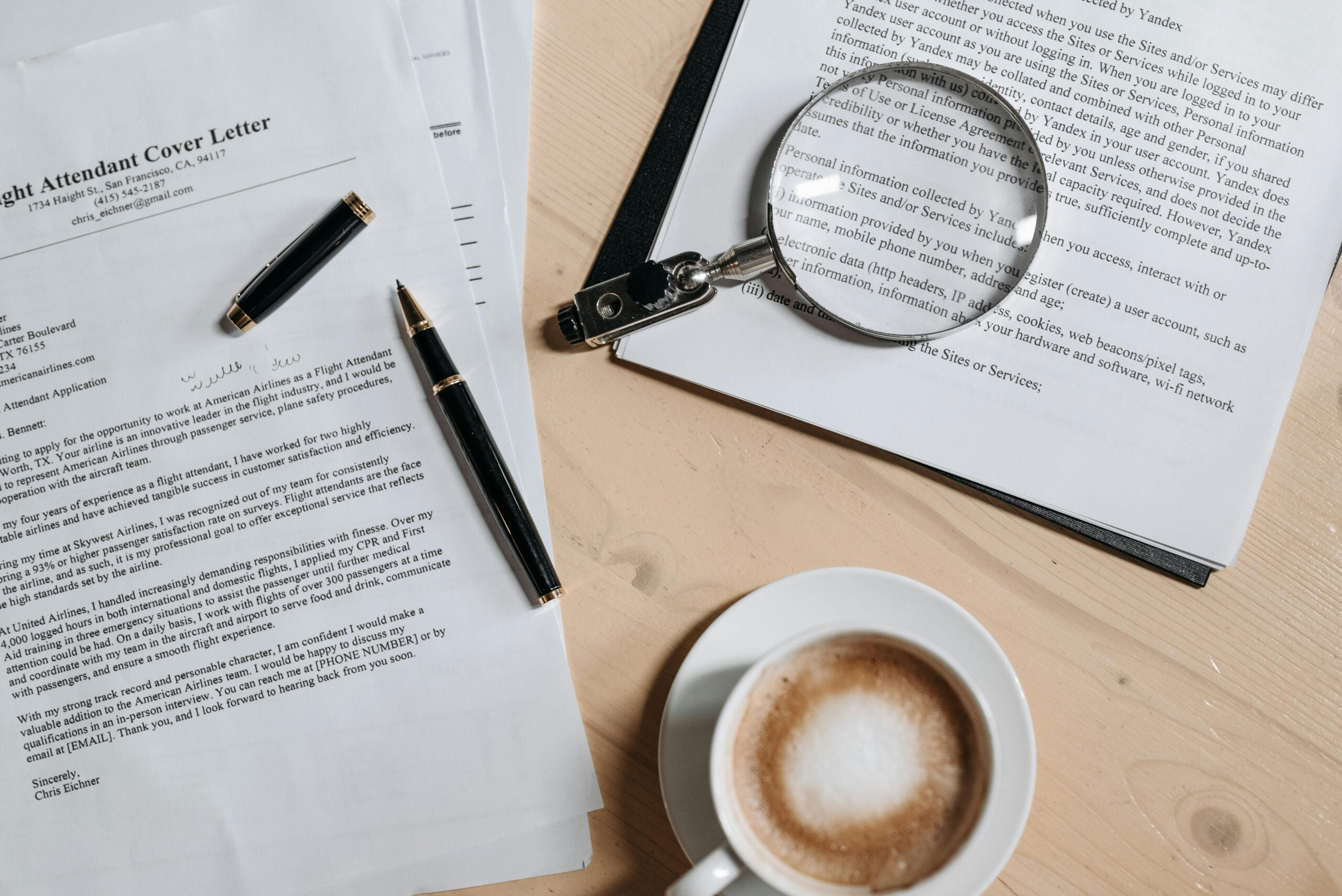After interviewing tens of recruiters and hiring managers, we discovered that about 50% of them read cover letters. While it’s true that half don’t, you can’t predict which type of recruiter will review your application. This means it’s crucial to write a cover letter to ensure you stand out to those who do read it. This article explores the ideal length and formatting for a cover letter, ensuring you capture the hiring manager’s attention without overwhelming them. By understanding the right balance, you can create an effective cover letter that enhances your chances of landing your dream job.
- What is a cover letter?
- Why cover letter length matters
- How long should a cover letter be?
- Tips for writing an effective cover letter
- Is a one page cover letter ideal?
- The pros and cons of a two-page cover letter
- Maintaining the right word count
- Structuring your cover letter
- Common mistakes to avoid
- Final tips and summary
Bullet point summary
- Ideal cover letter length: 250 to 400 words.
- Cover letters should be tailored to the specific job.
- Focus on relevant qualifications and experiences.
- Structure your cover letter with an introduction, middle paragraphs, and a conclusion.
- Avoid common mistakes like overloading with information and being too generic.
What is a cover letter?
This is a document that accompanies your resume in a job application. It introduces you to the hiring manager and highlights your relevant skills and qualifications for the specific job you’re applying for. A well-written cover letter demonstrates your interest in the company and the position, providing a first impression that can make all the difference in the competitive job market.
Why cover letter length matters
The length of your cover letter is crucial because it affects how well your message is conveyed and whether it holds the reader’s attention. A cover letter that is too short may not provide enough information to showcase your qualifications, while one that is too long can overwhelm the hiring manager and dilute your key points. Therefore, determining the length for a cover letter is essential for creating a balanced and impactful document.
How long should a cover letter be?
So, how long should a cover letter be? The ideal length for a cover letter is typically around one to two paragraphs, fitting within one page. A good cover letter should range between 150 to 250 words. This word count allows you to be concise yet comprehensive, providing enough detail to demonstrate your qualifications without overwhelming the reader.
Tips for writing an effective cover letter
Keep your cover letter concise
It’s important to keep your cover letter concise and to the point. Focus on highlighting your most relevant skills and experiences that align with the job description. Avoid unnecessary details and stay focused on how you can contribute to the company’s success.
Tailor your cover letter
Customize your cover letter to the specific job you’re applying for. Mention the position you are applying for and address how your qualifications match the job description requirements. This personalization shows the hiring manager that you have a genuine interest in the role and have taken the time to understand the company’s needs.
Is a one page cover letter ideal?
A one-page cover letter is often considered ideal because it provides enough space to elaborate on your qualifications without becoming a long document. Keeping your cover letter to one page helps ensure that it remains concise and easy to read. A cover letter should never exceed one page unless specifically requested by the employer.
The pros and cons of a two-page cover letter
While a two-page cover letter is generally discouraged, there are situations where it might be acceptable. For instance, if you have extensive experience or are applying for a highly technical position, a two-page cover letter may be necessary to fully convey your qualifications. However, it’s crucial to ensure that every paragraph in a two-page cover letter is relevant and adds value.
Maintaining the right word count
Maintaining the right cover letter length is key to making a strong impression. Aim for a word count of 250 to 400 words. This range is sufficient to detail your qualifications and interest in the job while maintaining your cover letter concise and readable. Remember, it’s important to keep your cover letter focused and relevant to the application.
Structuring your cover letter
First paragraph
The first paragraph of your cover letter should introduce you and express your interest in the specific job. Mention how you found out about the position and why you’re excited about the opportunity.
Middle paragraphs
Use the middle paragraphs to detail your qualifications and experiences that make you a fit for the job. Provide specific examples of your achievements and how they relate to the job description. Aim to cover your key points in around three to four paragraphs.
Final paragraph
In the final paragraph, thank the hiring manager for their consideration and express your enthusiasm for further discussing how you can contribute to the company. Include a call to action, such as requesting an interview or providing your contact information for follow-up.

Common mistakes to avoid
Overloading with Information
Avoid overloading your cover letter with too much information. Stick to the most relevant points and maintain your cover letter concise.
Being Too Generic
A generic cover letter fails to stand out. Customize your cover letter to the specific role and company to make a stronger impact.
Ignoring Formatting
Proper formatting is essential for readability. Use a standard font size and style, and ensure that your cover letter is well-organized with clear paragraphs.
Final tips and summary
- Keep it Concise: Aim for a cover letter length of 250 to 400 words.
- Tailor Your Cover Letter: Customize your cover letter for each job application.
- Focus on Relevance: Highlight your most relevant qualifications and experiences.
- Use a Clear Structure: Include an introduction, middle paragraphs, and a conclusion.
- Avoid Common Mistakes: Don’t overload with information, avoid being too generic, and pay attention to formatting.
By following these tips, you can create a cover letter that effectively showcases your qualifications and makes a positive impression on the hiring manager.






Leave a Reply